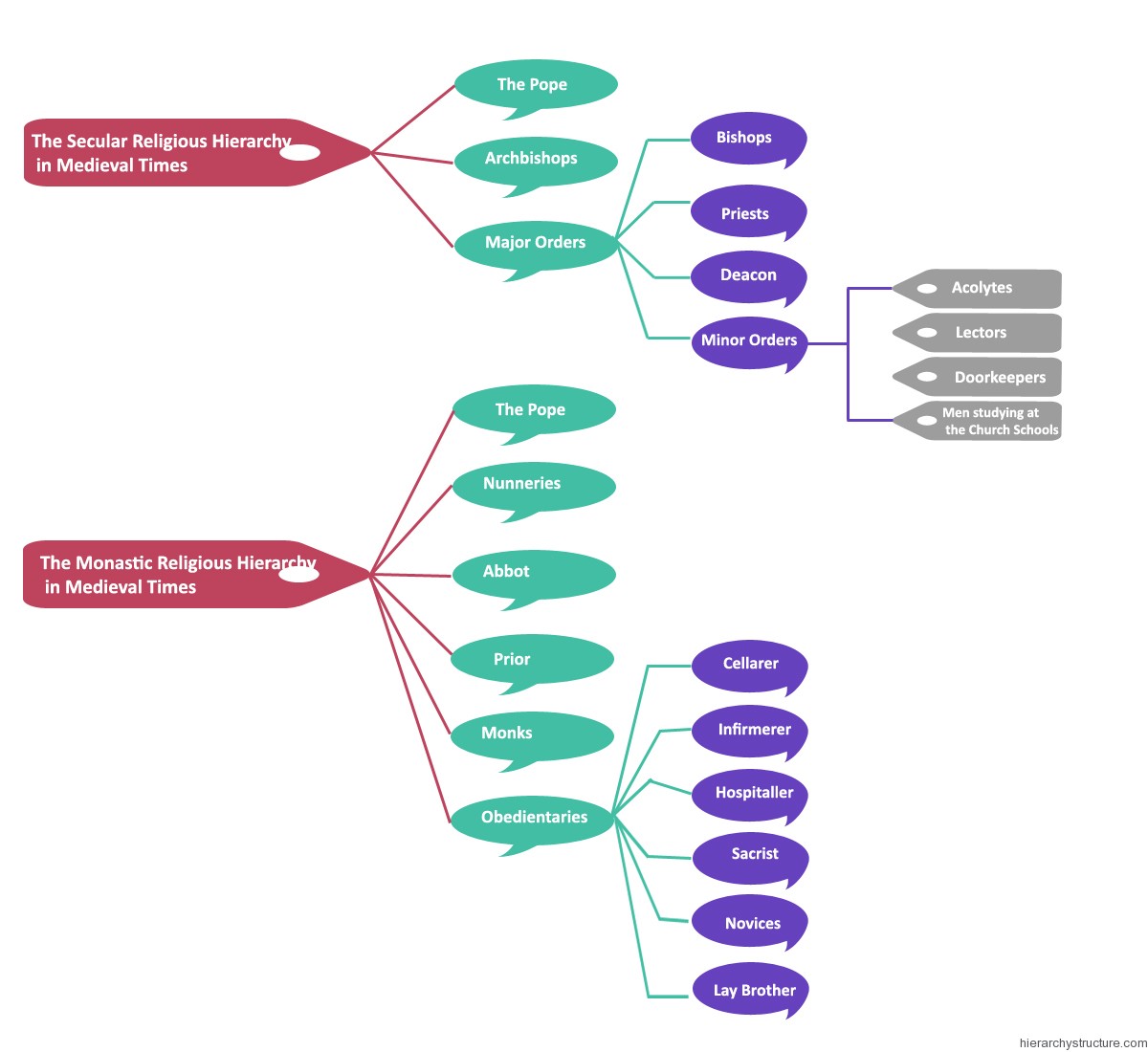The medieval time or era was a period in the history of the world that dated from the fall down of famous royal empire around the 5th century. The accurate fixing of particular dates about the starting and ending of this medieval era is arbitrary. This medieval era very precisely incorporated three estates. For an example – the entire political power and authorizations were administered by the noble classes. The entire religious system was under the supervision of churches.
Their duty was to look after carefully of the spiritual welfare of the society. The religious hierarchy in medieval era was thus formulated around the churches of that time. But the medieval time Church had two distinct hierarchies that were somehow related to each other. The entire religious hierarchy in medieval times would be incomplete without any of these two hierarchies – the Monastic & the Secular. So in this article both of these hierarchies will be explained later on one by one. Let us first discuss about the Secular religious hierarchy in medieval times in brief

The Secular religious hierarchy in medieval times
This hierarchy is explained below in descending order. Take a look:
- The Pope – Head of the medieval era religious hierarchy.
- Archbishops – They worked according to the instructions of the Pope.
- Major Orders – This medieval social group incorporated three more sub groups acting on the command of the archbishops. These were –
- Bishops
- Priests
- Deacon
- Minor Orders – This group formulated the lowest level of Secular religious hierarchy in medieval times. These were of four sub divisions described as below –
- Acolytes
- Lectors
- Doorkeepers
- Men studying at the Church Schools
The Monastic religious hierarchy in medieval times
This hierarchy is also described below in a systematic descending order. Have a look –
- The Pope – The head of all religious activities in the medieval period.
- Nunneries – These directed according to the guidelines of the Pope.
- Abbot – They performed spiritual rituals for the kingdom but only after having considerations form either Pope or nunneries.
- Prior – A prior always followed abbess for every action.
- Monks – These were the holy priests
- Obedientaries – These were lower level monks. These were further categorized as below –
- Cellarer
- Infirmerer
- Hospitaller
- Sacrist
- Novices – They were quite more like lay brothers but quite more seniors.
- Lay Brother – After completion of monastic schools, the children became lay brothers.
- Oblates – These were children attending monastic schools.
But in both the hierarchies, every one of these above people, from Pope to doorkeeper, were required to have their hair of head shorn in the Roman tonsure. This was done in a systematic manner. The crown of the head was completely shaved while leaving a small ring of hair unshaved around the head. But nuns normally had their hair cut very petite under their covering.
